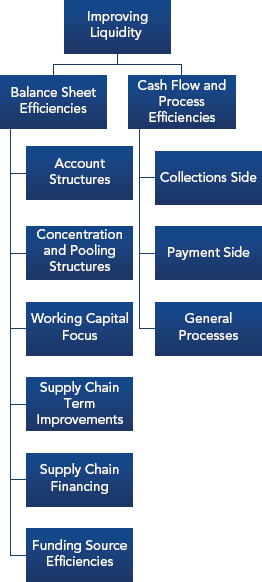Chapter Eight
Liquidity Management Introduction and Float
IN THIS CHAPTER, WE INTRODUCE the concept of liquidity management and pooling and go into detail on one of its main areas of focus: reducing float. Part Three provides further discussions on liquidity and its management.
INTRODUCING LIQUIDITY MANAGEMENT
Managing liquidity involves increasing cash visibility, efficiency, and usage; extracting value from cash; and reducing the level of working capital or external debt required for the firm. Using the firm’s own cash dramatically enhances financial ratios and return on capital (see Figure 8.1).
FIGURE 8.1 Liquidity Management

There are many areas that the Treasurer can look at to proactively manage the firm’s liquidity and improve its cash efficiency. Earlier we discussed different account structures. Concentration and pooling structures work on top of account structures and are used to consolidate cash positions around the world and distribute liquidity where needed across a regional or global network. Managing working capital and reducing the requirement of working capital is a core area of focus. Structuring the financial supply chain and utilising opportunities in the supply chain are areas where Treasury is increasingly becoming involved as a trusted advisor. Finally, finding diverse, deep, and reliable funding sources at an optimal cost that can tide the firm through ...
Get The Handbook of Global Corporate Treasury now with the O’Reilly learning platform.
O’Reilly members experience books, live events, courses curated by job role, and more from O’Reilly and nearly 200 top publishers.

